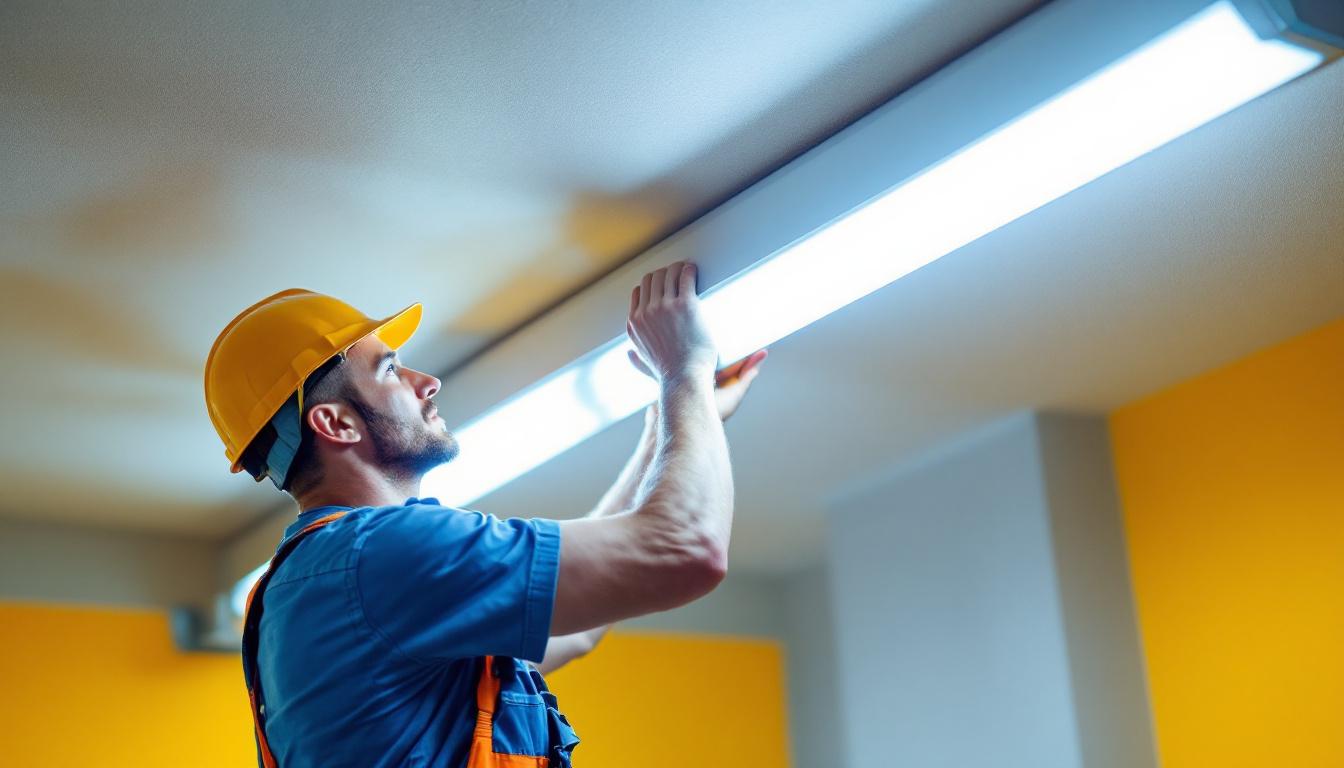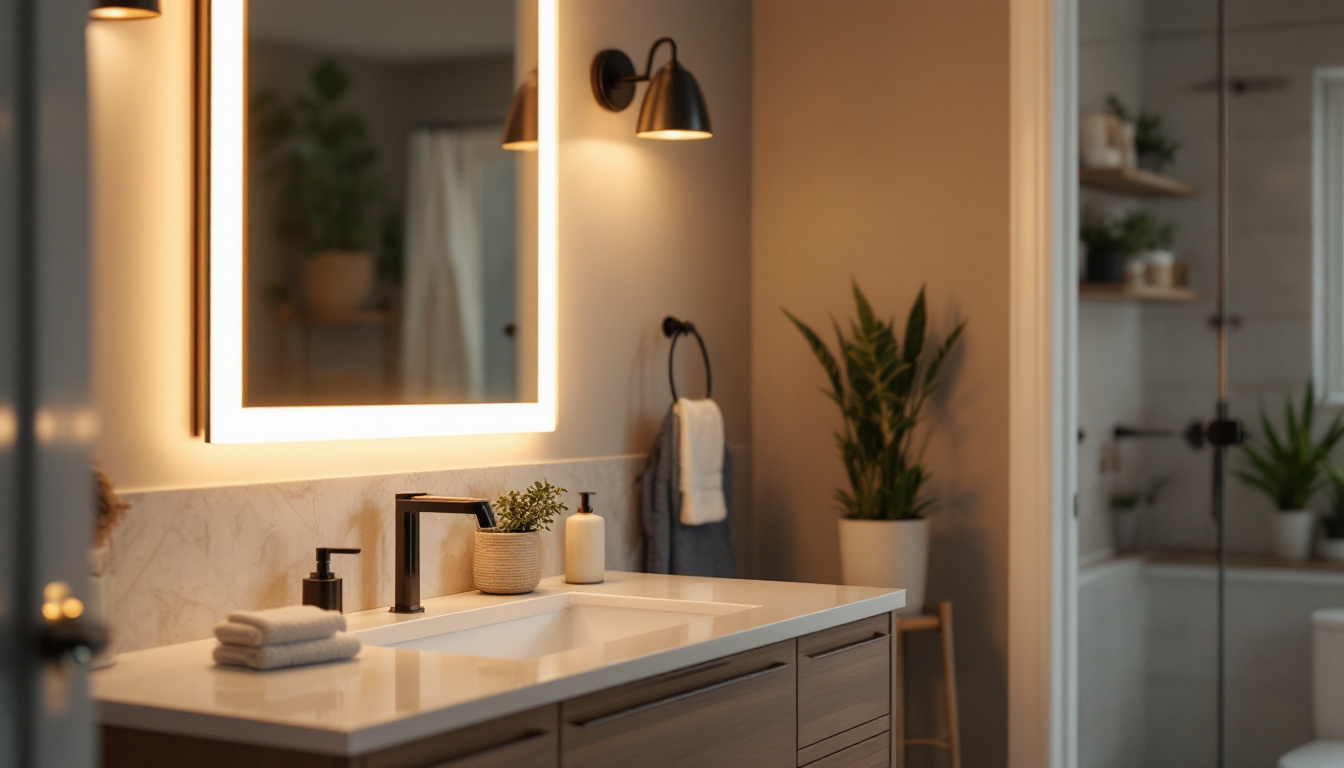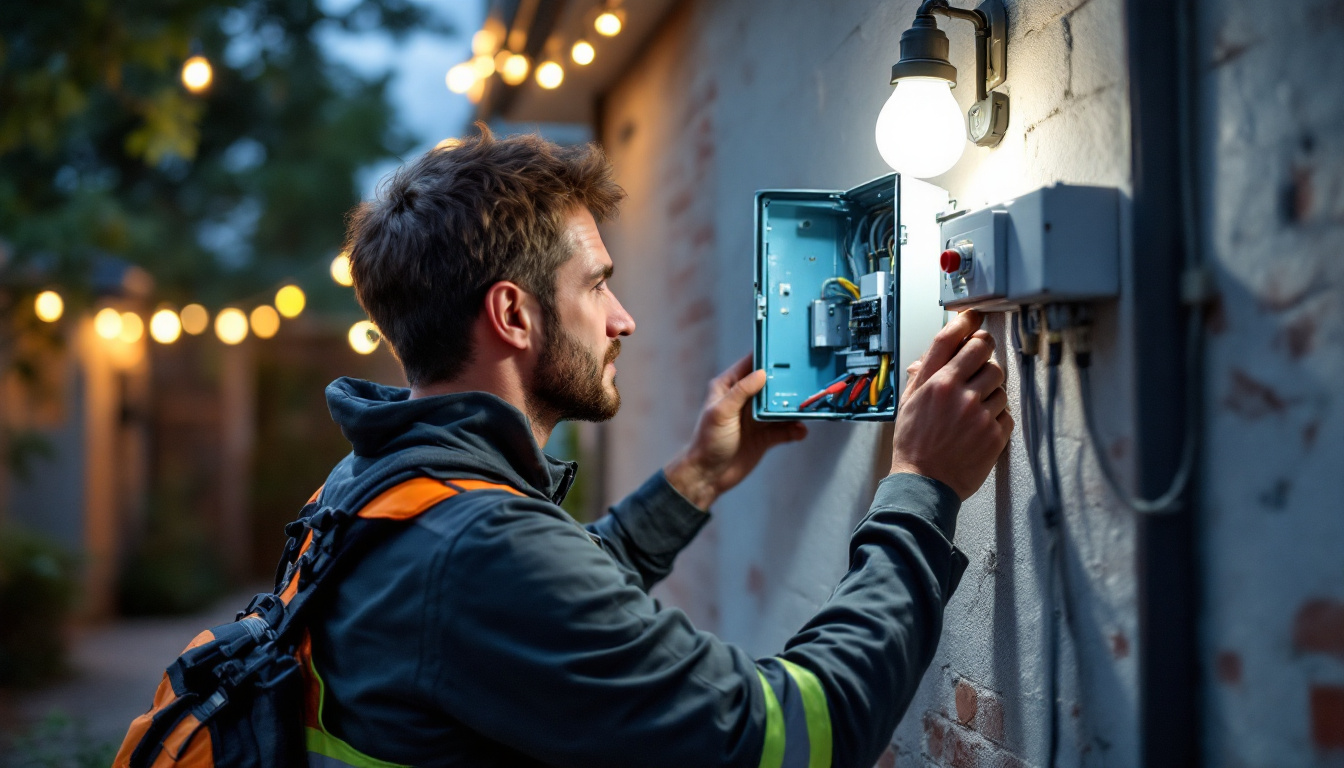
LED panel lighting has revolutionized the way indoor spaces are illuminated, offering significant advantages over traditional lighting solutions such as fluorescent and incandescent fixtures. For lighting contractors, the shift towards LED panels represents both an opportunity and a challenge. The technology’s energy efficiency, long lifespan, and design flexibility make it highly attractive to commercial, industrial, and residential clients alike.
However, as LED panels become increasingly prevalent, contractors must navigate a complex landscape of technical specifications, installation requirements, and client expectations. Understanding the nuances of LED panel technology is essential to delivering high-quality, reliable lighting solutions that meet modern standards.
One of the key benefits of LED panels is their ability to provide uniform light distribution, which significantly enhances the visual comfort of indoor environments. Unlike traditional lighting options that can create harsh shadows and uneven lighting, LED panels offer a soft, diffused light that minimizes glare and enhances the overall aesthetic of a space. This characteristic is particularly beneficial in settings such as offices, schools, and healthcare facilities, where optimal lighting conditions can improve productivity and well-being. Furthermore, the versatility of LED panels allows for various color temperatures and dimming capabilities, enabling contractors to tailor lighting solutions to the specific needs of their clients.
Moreover, the environmental impact of LED technology cannot be overlooked. With growing concerns about sustainability and energy consumption, LED panels present a compelling solution for eco-conscious consumers and businesses. By significantly reducing energy usage and minimizing waste through their long operational life, LED panels contribute to lower carbon footprints and reduced utility costs. As a result, contractors who prioritize eco-friendly practices and offer energy-efficient solutions are likely to attract a broader client base, positioning themselves as leaders in a rapidly evolving industry. As the demand for sustainable lighting continues to rise, staying informed about the latest advancements in LED technology will be crucial for contractors aiming to remain competitive.
One of the primary technical hurdles lighting contractors face is ensuring that LED panels are compatible with the existing electrical infrastructure. Many buildings still have wiring and control systems designed for older lighting technologies, which can cause issues such as flickering, dimming incompatibilities, or even premature failure of LED panels.
Contractors must thoroughly assess the electrical environment before installation, often requiring upgrades to drivers, dimmers, or transformers. Failure to do so can lead to costly callbacks and dissatisfied clients. Moreover, understanding the nuances of the electrical system, including voltage levels and circuit load capacities, is essential. In some cases, contractors may need to collaborate with electrical engineers to design a comprehensive upgrade plan that not only accommodates the new LED panels but also enhances the overall energy efficiency of the building. This proactive approach can save time and resources in the long run, ensuring a smoother installation process.
Although LED panels generate less heat than traditional bulbs, heat dissipation remains a critical factor affecting their performance and lifespan. Improper installation or inadequate ventilation can cause overheating, leading to reduced efficiency and early component failure.
Lighting contractors must understand the thermal characteristics of different LED panel models and ensure that installation environments support proper heat management. This often involves selecting panels with integrated heat sinks and advising clients on suitable mounting locations. Additionally, it is vital to educate clients about the importance of maintaining a clean environment around the panels, as dust and debris can obstruct airflow and exacerbate heat buildup. Implementing regular maintenance checks can also extend the life of the installation, ensuring that the LED panels continue to operate at peak performance for years to come.
One of the selling points of LED panels is their ability to provide uniform, glare-free illumination. However, achieving this effect depends heavily on correct installation and product selection. Variations in panel thickness, diffuser quality, and mounting height can affect light distribution.
Contractors need to be adept at calculating the optimal placement and spacing of panels to avoid dark spots or excessive brightness, which can compromise both aesthetics and functionality. This often involves utilizing lighting design software to simulate different configurations and predict how light will interact with the space. Furthermore, educating clients on the impact of wall colors and furniture placement can also play a significant role in achieving the desired lighting effect. By considering these factors, contractors can not only enhance the visual appeal of a space but also improve its overall usability, making it more conducive to work or relaxation.
The LED panel market is flooded with a wide range of products varying significantly in quality, performance, and price. For contractors, sourcing reliable panels that meet project specifications without exceeding budget constraints is a constant balancing act.
Low-quality panels may initially appear cost-effective but often result in higher maintenance costs and client dissatisfaction. Establishing trusted supplier relationships and conducting rigorous quality checks are essential strategies for mitigating this risk. Furthermore, contractors are increasingly turning to certifications and industry standards as benchmarks for quality assurance. By prioritizing suppliers who adhere to recognized standards, such as Energy Star or UL certifications, contractors can enhance their credibility and ensure that they are providing clients with products that are both safe and efficient. This not only protects the contractor’s reputation but also fosters long-term partnerships that can lead to better pricing and priority access to new products.
LED panels often come in various sizes, color temperatures, and lumen outputs, requiring contractors to maintain a diverse inventory. Predicting demand accurately can be challenging, especially for large-scale projects or those with tight deadlines.
Delays in receiving specific panel types can stall entire projects, impacting profitability and reputation. Lighting contractors must implement efficient inventory management systems and maintain clear communication with suppliers to minimize lead times. Advanced forecasting techniques, such as using historical sales data and market trends, can aid in better predicting demand. Additionally, leveraging technology through inventory management software allows contractors to track stock levels in real-time, automate reordering processes, and even analyze supplier performance. This proactive approach not only helps in maintaining optimal inventory levels but also enhances the overall efficiency of project execution, ensuring that contractors can meet client expectations and project timelines without unnecessary delays.
Increasingly stringent energy codes and sustainability goals are shaping lighting design decisions. LED panels are generally favored for their energy efficiency, but contractors must ensure that installations comply with local regulations and certification requirements such as DLC (DesignLights Consortium) or ENERGY STAR.
Understanding these standards and integrating them into project planning helps contractors deliver compliant solutions that qualify for rebates or incentives, adding value for clients.
Modern architectural trends demand lighting solutions that blend seamlessly with interior design while providing optimal illumination. LED panels come in various styles, including ultra-thin, edge-lit, and customizable color temperatures, offering contractors a broad palette of options.
However, selecting the right panel involves balancing aesthetic preferences with practical considerations such as light output, color rendering index (CRI), and maintenance accessibility. Contractors must collaborate closely with designers and clients to achieve the desired outcome.
The LED lighting industry is evolving rapidly, with continuous improvements in panel efficiency, smart controls, and integration with building management systems. For lighting contractors, staying current with these innovations is critical to maintaining competitive advantage and delivering cutting-edge solutions.
Ongoing education through manufacturer training programs, industry conferences, and certification courses is necessary to understand new products, installation techniques, and troubleshooting methods.
Smart lighting systems that incorporate sensors, dimming controls, and wireless connectivity are becoming standard in commercial and residential projects. Integrating LED panels with these technologies adds complexity to installation and programming but offers significant benefits in energy savings and user experience.
Contractors must develop expertise in these systems to design and implement seamless, user-friendly lighting solutions that meet modern expectations.
Clients often have high expectations for LED panel lighting, anticipating immediate energy savings, enhanced aesthetics, and minimal maintenance. Lighting contractors must manage these expectations by providing clear, evidence-based information about project timelines, costs, and performance outcomes.
Transparent communication helps prevent misunderstandings and builds trust, which is essential for long-term client relationships.
Lighting projects frequently involve collaboration with architects, electricians, interior designers, and facility managers. Coordinating among these groups can be challenging, particularly when changes in design or scope occur mid-project.
Effective project management practices, including detailed documentation, regular progress updates, and proactive problem-solving, are vital to ensuring smooth execution and client satisfaction.
LED panels represent a transformative technology in the lighting industry, offering unparalleled benefits in efficiency, design flexibility, and sustainability. However, lighting contractors must overcome a range of technical, logistical, and managerial challenges to fully capitalize on these advantages.
By investing in technical knowledge, establishing reliable supply chains, adhering to compliance standards, and fostering clear client communication, contractors can position themselves as trusted experts in LED panel lighting. This strategic approach not only enhances project outcomes but also supports long-term business growth in an increasingly competitive market.
Ready to overcome the challenges of LED panel installations and lead the market? LumenWholesale is your partner in success, providing you with top-quality, spec-grade lighting products at unbeatable wholesale prices. Say goodbye to inflated markups and hello to a vast selection of industry-standard, high-performance lighting options. With free shipping on bulk orders, we ensure you get the premium lighting you need at the best value. Elevate your lighting projects and experience the perfect blend of quality, affordability, and convenience. Wholesale Lighting at the Best Value is just a click away.

Discover how lighting contractors can enhance their projects with 2 ft fluorescent lights.

Discover the transformative impact of LED vanity lights through real-world success stories from lighting contractors.

Discover essential insights and expert tips for lighting contractors on selecting and installing electrical outdoor boxes.

Discover effective strategies for training your team in utilizing LED shop lights high bay systems.